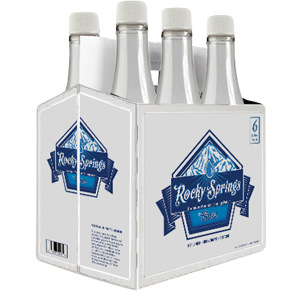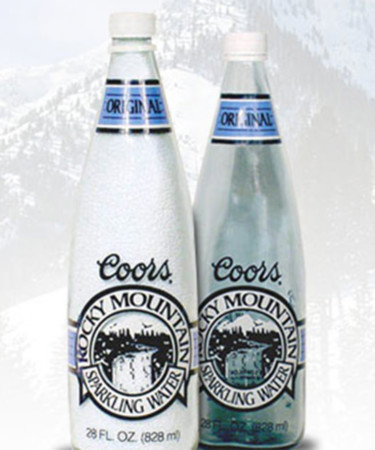There’s one way Americans like their Rocky Mountain spring water: in the forehead-crushable, carbonated limpidity of a can of Coors. Too bad nobody told that to Coors, who in January of 1990 did their very best to turn that Rocky Mountain spring water into its own marketable product.
Then again it was 1990, with the suited corporate masses still coming off the “high” of the 1980s. Bottled water was everywhere—most every episode of Seinfeld involved someone cracking an Evian, or possibly Snapple. Tap water was plebeian, low rank, “less healthy” (though a four-year study by the NRDC proved otherwise).
Whatever crazy scientists had to say about it, they couldn’t kill our bottled water buzz. And Coors wanted in on the game, and they were kind of literally sitting on an easily exploitable source. So out comes Coors Rocky Mountain Sparkling Water, made with the very same beloved water that had gone into every can of Coors for 50 years, with a minimum of production adjustment, and a way to tap into what then Company Brand Development Manger John Recca called “the growing national trend toward moderate alcohol consumption.”
 As Recca explained to The New York Times just a day after the product release, “bottled water is the fastest-growing beverage category in America.” He wasn’t wrong—from 1970 to 1998 there was a 112.5% increase in mineral water producers alone. So Coors decided to bottle its liquid (Rocky Mountain) gold mine, in flavors Original, Cherry, and Lemon-Lime. And among marketing teams, there was much rejoicing.
As Recca explained to The New York Times just a day after the product release, “bottled water is the fastest-growing beverage category in America.” He wasn’t wrong—from 1970 to 1998 there was a 112.5% increase in mineral water producers alone. So Coors decided to bottle its liquid (Rocky Mountain) gold mine, in flavors Original, Cherry, and Lemon-Lime. And among marketing teams, there was much rejoicing.
And the bottle is nice enough, with a waterfall and some kind of nice Eagle flying overhead. A ribbon around the picture reads “Rocky Mountain Sparkling Water.” So far, so good. Except right across the top, there’s a big fat “Coors.”
And that confused the hell out of people. The immediate assumption was that the water contained alcohol. An easy solution might have been to simply remove the “Coors,” but Coors, maybe too proud of its ingenious double-use of that sweet, sweet Rocky Mountain spring water, couldn’t do it. They pulled the waters just two years after launch, losing all chance of, ahem, “tapping into” one of the fastest growing beverage segments in the industry and becoming one of the bigger product fails of all time.
To be fair, there were at least a few ardent fans out there. Time Magazine quotes a writer for Woman’s Day, who insisted “Coors Sparkling Water was the best sparkling water I ever bought.” One of her reasons: “It was very wet.” Fair enough.
If she’s still out there, she should know, Coors does still produce a kind of water. They just call it Coors Light.
